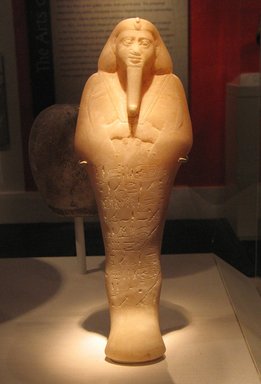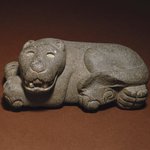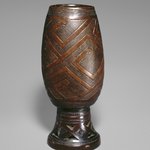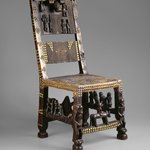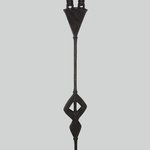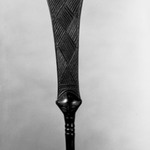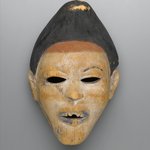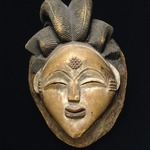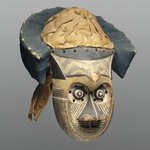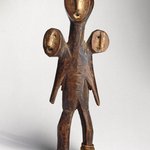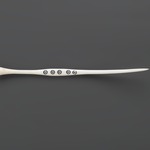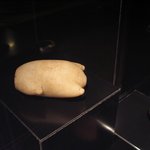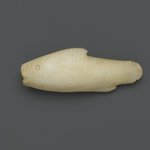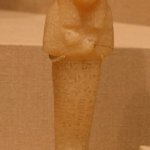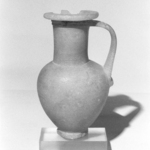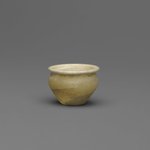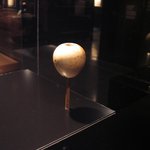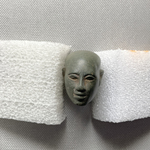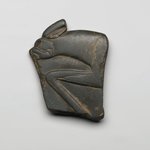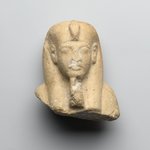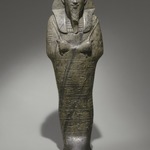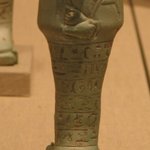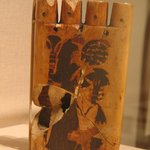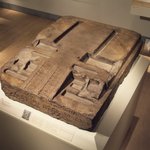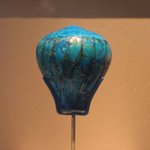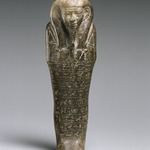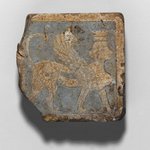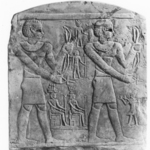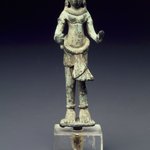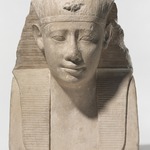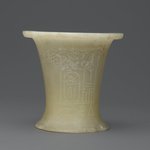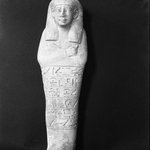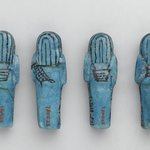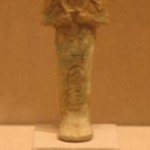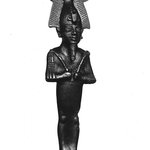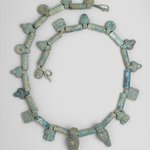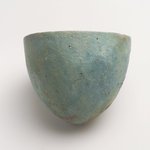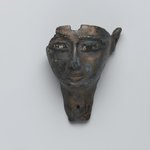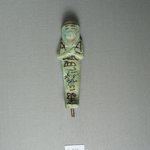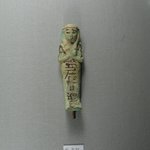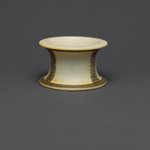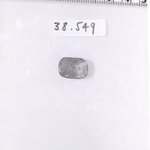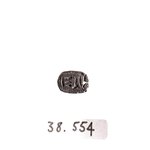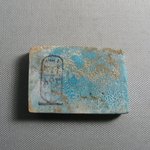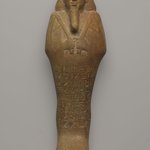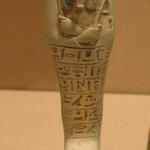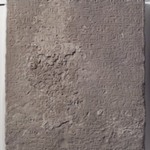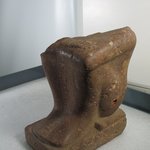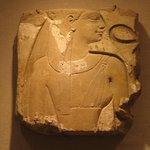

Nubian. Ushabti of King Taharqa, ca. 1075–656 B.C.E. Egyptian alabaster (calcite), 13 1/8 x 4 3/16 x depth at base 2 7/16 in. (33.3 x 10.7 x 6.2 cm). Brooklyn Museum, By exchange, 39.4. Creative Commons-BY (Photo: Brooklyn Museum, CUR.39.4_doubletake_2014.jpg)
Ushabti of King Taharqa
Egyptian, Classical, Ancient Near Eastern Art
Taharqa was one of the rulers of the Nubian Kingdom of Napata who also ruled Egypt in the Twenty-fifth Dynasty (circa 760–656 c.e.). Having conquered Egypt, the Nubian royal family adopted many Egyptian customs. Shabtis are funerary figures intended to do the agricultural work the gods might require of the deceased.
CULTURE
Nubian
MEDIUM
Egyptian alabaster (calcite)
DATES
ca. 1075–656 B.C.E.
DYNASTY
Dynasty 25
PERIOD
Third Intermediate Period
DIMENSIONS
13 1/8 x 4 3/16 x depth at base 2 7/16 in. (33.3 x 10.7 x 6.2 cm) (show scale)
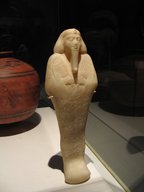


COLLECTIONS
Egyptian, Classical, Ancient Near Eastern Art
ACCESSION NUMBER
39.4
CREDIT LINE
By exchange
CATALOGUE DESCRIPTION
Large alabaster ushabti of Tirhaqa (688-663 BC). The figure is made of an extremely beautiful alabaster which appears different form that usually found in Egypt, the veining being much less pronounced. The figure is of exactly the same type as 39.2.
Condition: Workmanship excellent. There are several deposits and stains on the back apparently caused by water.
EXHIBITIONS
MUSEUM LOCATION
This item is not on view
CAPTION
Nubian. Ushabti of King Taharqa, ca. 1075–656 B.C.E. Egyptian alabaster (calcite), 13 1/8 x 4 3/16 x depth at base 2 7/16 in. (33.3 x 10.7 x 6.2 cm). Brooklyn Museum, By exchange, 39.4. Creative Commons-BY (Photo: Brooklyn Museum, CUR.39.4_doubletake_2014.jpg)
IMAGE
installation, CUR.39.4_doubletake_2014.jpg. Brooklyn Museum photograph, 2015
"CUR" at the beginning of an image file name means that the image was created by a curatorial staff member. These study images may be digital point-and-shoot photographs, when we don\'t yet have high-quality studio photography, or they may be scans of older negatives, slides, or photographic prints, providing historical documentation of the object.
RIGHTS STATEMENT
Creative Commons-BY
You may download and use Brooklyn Museum images of this three-dimensional work in accordance with a Creative Commons license. Fair use, as understood under the United States Copyright Act, may also apply.
Please include caption information from this page and credit the Brooklyn Museum. If you need a high resolution file, please fill out our online application form (charges apply).
For further information about copyright, we recommend resources at the United States Library of Congress, Cornell University, Copyright and Cultural Institutions: Guidelines for U.S. Libraries, Archives, and Museums, and Copyright Watch.
For more information about the Museum's rights project, including how rights types are assigned, please see our blog posts on copyright.
If you have any information regarding this work and rights to it, please contact copyright@brooklynmuseum.org.
RECORD COMPLETENESS
Not every record you will find here is complete. More information is available for some works than for others, and some entries have been updated more recently. Records are frequently reviewed and revised, and we welcome any additional information you might have.

